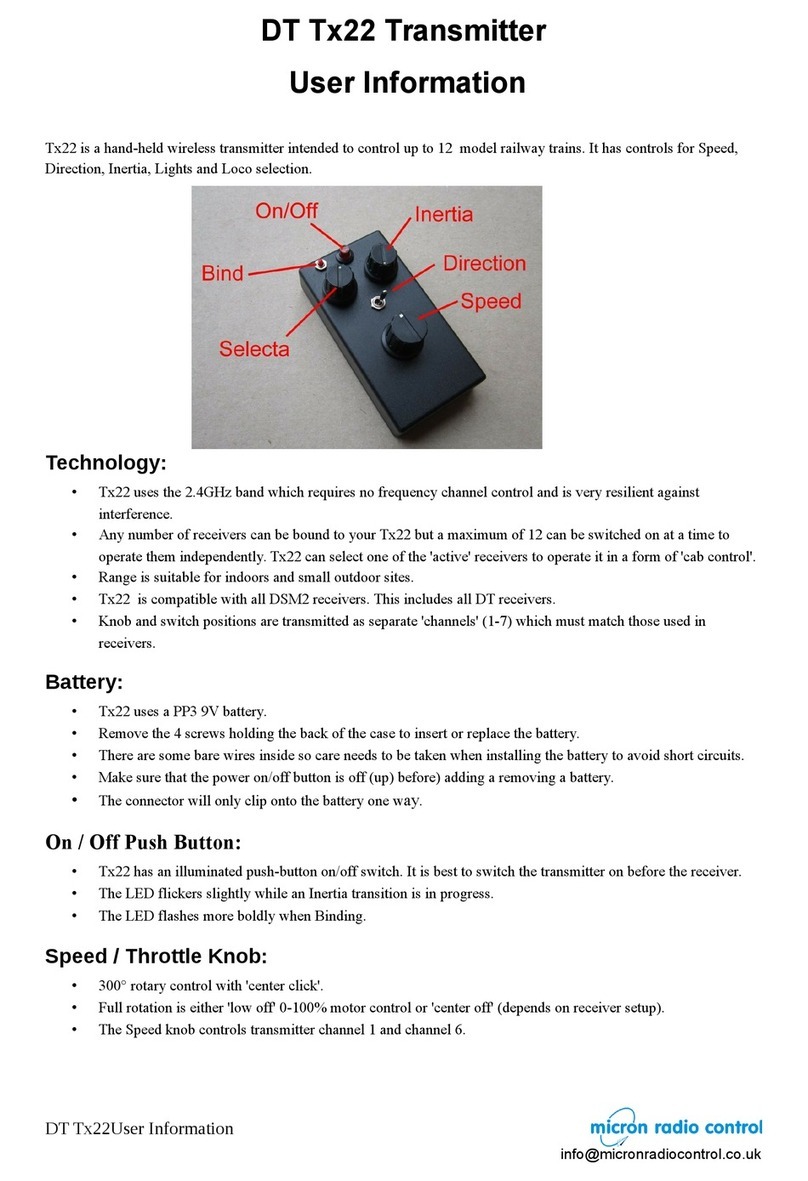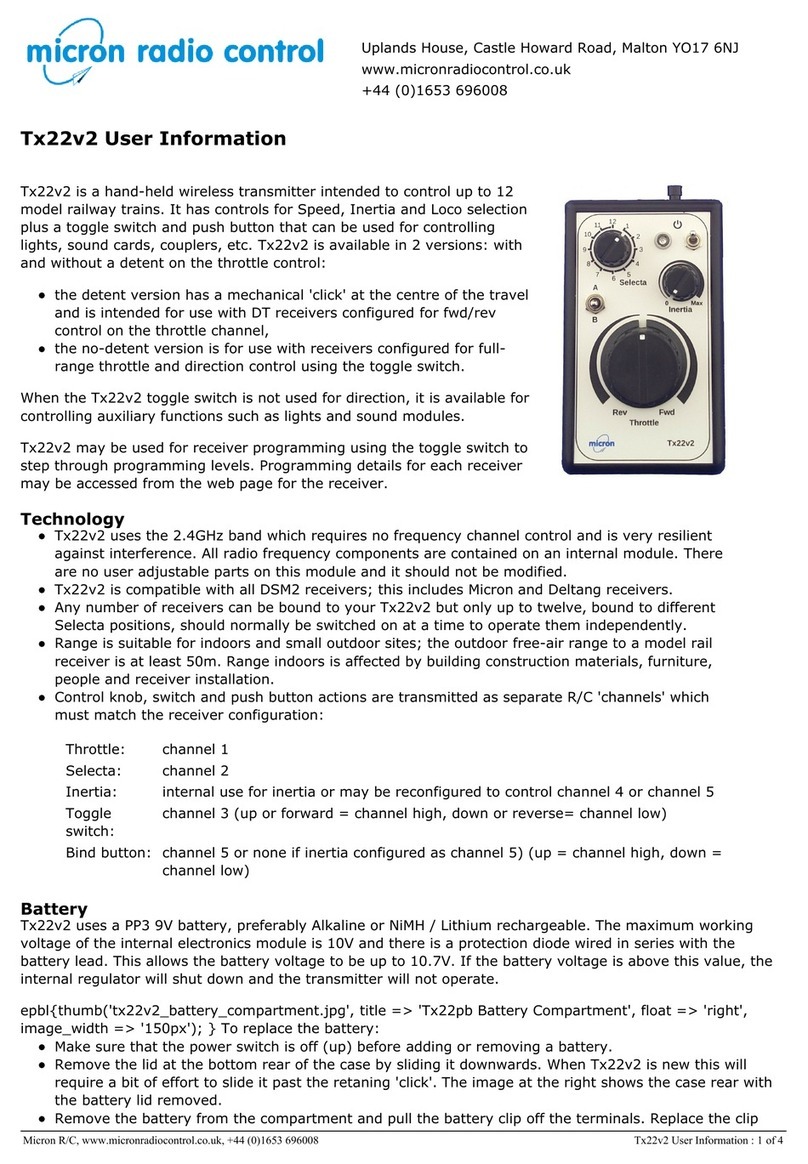Store programme
sequence value:
Pulse the toggle switch up.
The rx LED will briefly show rapid flashing and then show the currently
programmed flash pattern for the next in the sequence. If this is the last value in
the program sequence, there is a brief pause with the LED off while the changes
are written to safe storage and then the LED comes on solid.
Repeat the above for each program function that you wish to alter.
For example, to set the ESC output (the first if the receiver has multiple ESC) to respond to full range
throttle on channel 1 and direction control on channel 3, the programme sequence is 1,1,2,1,3:
Enter programming mode
Rx LED displays 1-flash, push S1 toggle up to accept
Rx LED displays 1-flash, push S1 toggle up
If rx LED does not display 2-flash, push S1 toggle down until it does, push S1 toggle up
If rx LED does not display 1-flash, push S1 toggle down until it does, push S1 toggle up
If rx LED does not display 3-flash, push S1 toggle down until it does, push S1 toggle up
Rx LED lights solid
Calibration
All ready-to-use transmitters are calibrated as the final manufacturing step. This sets the throttle control
centre position and normally only needs to be done once. If you suspect that the throttle control is not
operating correctly or you have replaced any of the internal components (e.g. throttle potentiometer), your
transmitter may need calibration.
If the bind button has been inadvertently held down for longer than 20 seconds, the previously stored
calibration data will have been overwritten and you could find that the throttle control behaves strangely.
To perform calibration:
Centre the Throttle knob
Rotate the Selecta switch to position 6 (pointer on knob is pointing vertically down)
If the toggle switches are latching type, ensure they are in the centre
Set Inertia to off
Switch the Tx on
Within 60 seconds, press and hold the Bind button
After 20 seconds, the Tx LED will:
go out for 2 seconds; come on for 3 seconds; go out for 2 seconds; come on for 3 seconds; go off
and stay off
Release the Bind button, the Tx LED will stay on
The transmitter controls are now calibrated.
Change Inertia Control Function
If the Bind button is pressed for more than 20s, it alters how the Inertia knob is used:
if the Bind button is pressed for 20s or more within the first 60s of switching on, it will perform
calibration of the throttle knob centre position
if the Bind button is pressed for 20s or more after the first 60s of switching on, it will toggle what the
Inertia knob is used for – Inertia or control of channel 4 or channel 5.
The default behaviour of the Inertia knob is to control acceleration and deceleration as described above. To
toggle the Inertia knob function:
1. switch the Tx on and wait 90s without touching the Bind button
2. press and hold the Bind button
3. after 20s the power LED will go off for 2s and then come on for 3s; release the Bind button in this 3s to
toggle the Inertia knob between controlling Inertia or controlling channel 4.
4. after a total of 25s (i.e. after the 3s of LED on) the power LED will go off and stay off until you release
the Bind button; this causes the Inertia knob to control channel 5
5. repeat steps 1 to 3 to revert to the Inertia knob controlling throttle inertia.
If the Inertia knob is being used for Inertia or channel 4, the Bind button controls channel 5 if pressed for
less than 20s. If the Inertia knob is being used for channel 5, the Bind button has no effect on channel 5 but
is still used for binding and controlling what the Inertia control is used for.























